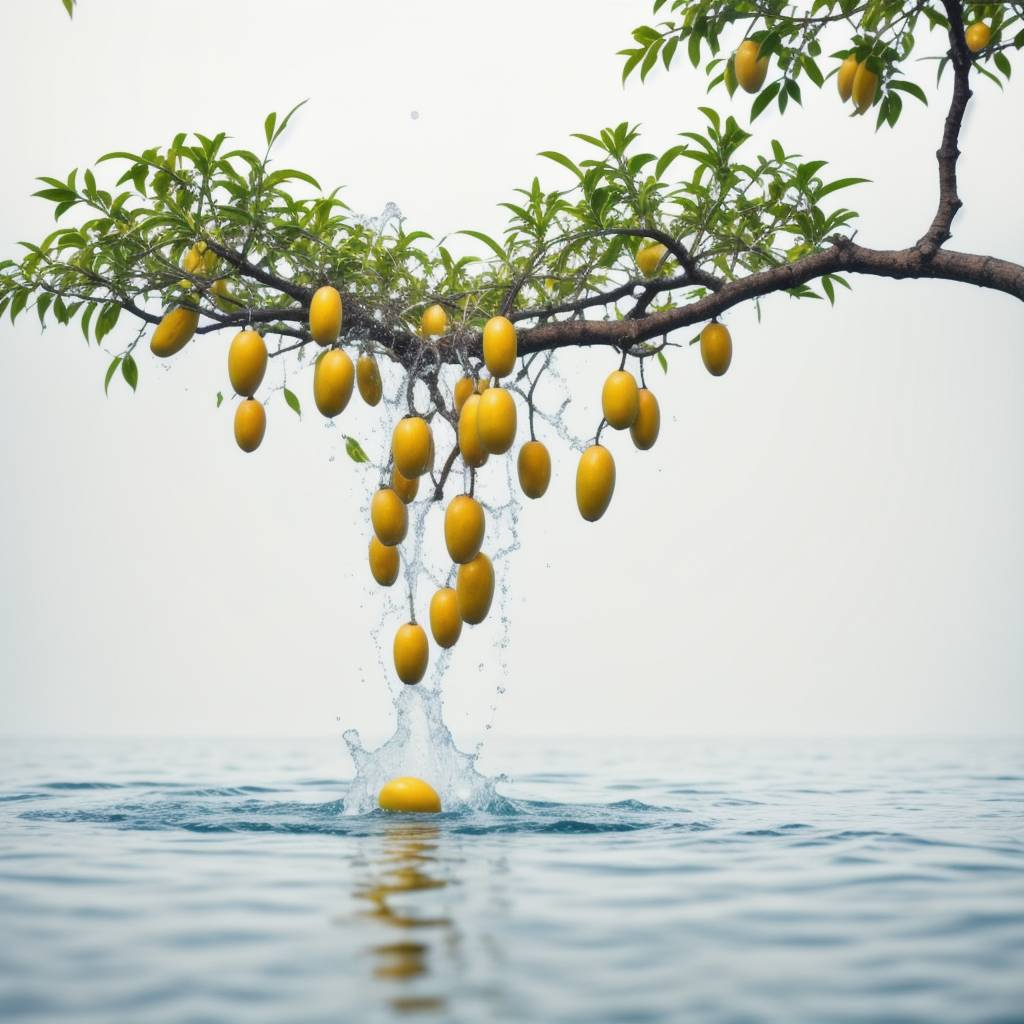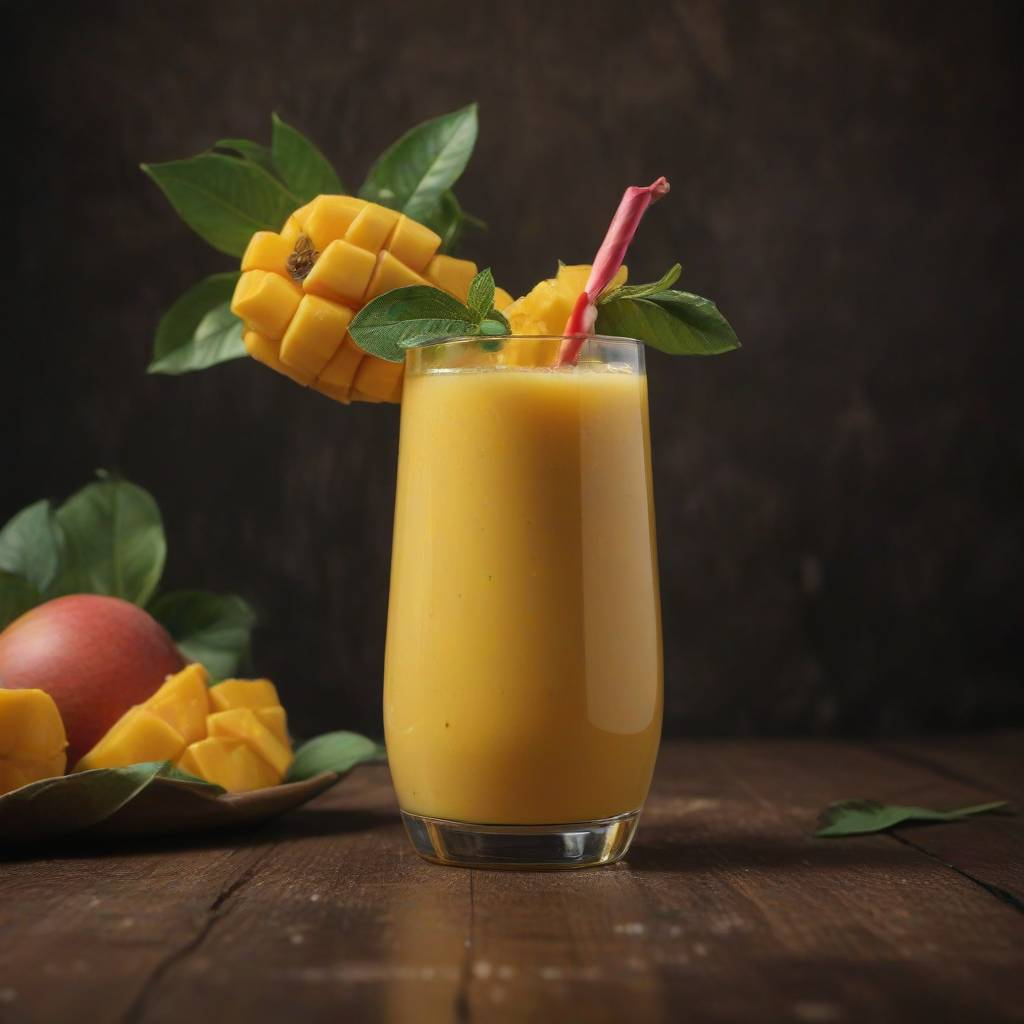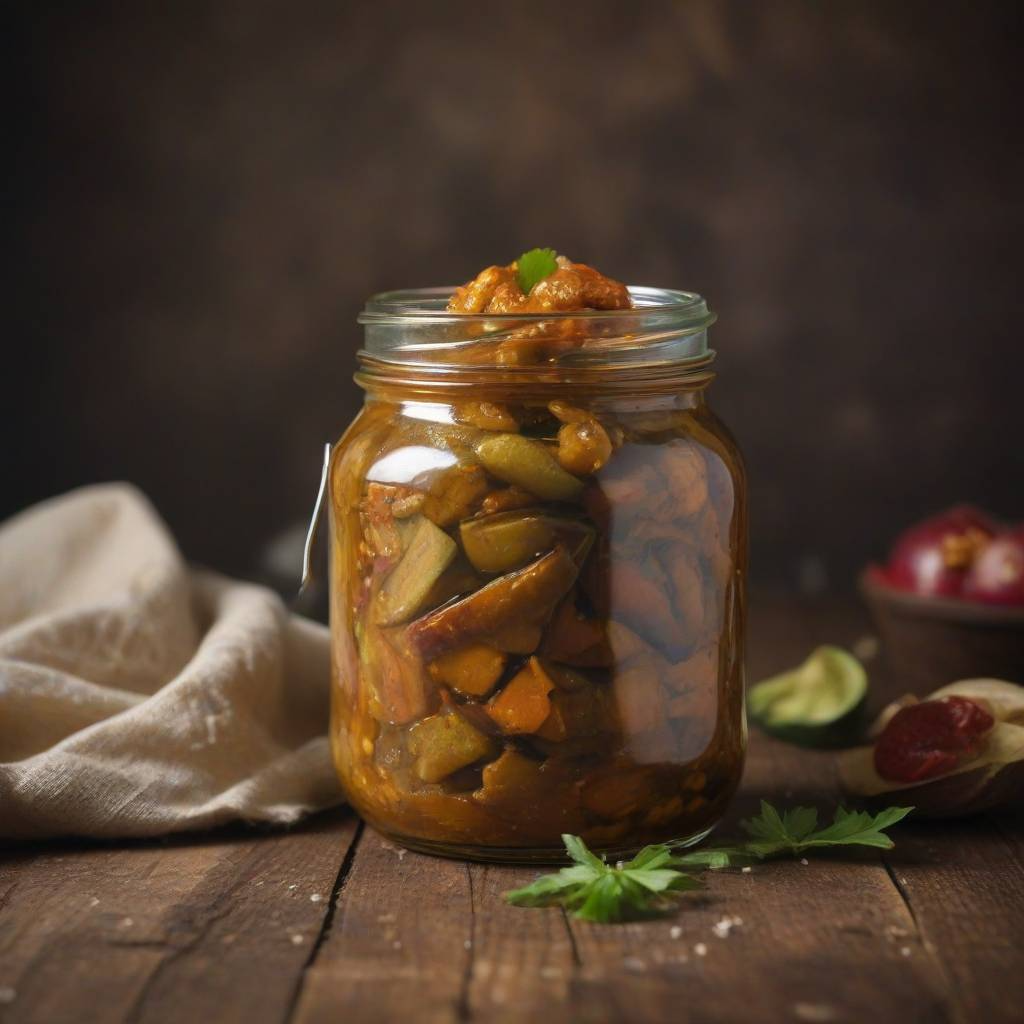"Life is like a mango; it's sweetest when you savor every moment, even the ones with a hint of tanginess."
The mango, often hailed as the “King of Fruits,” is a golden delight synonymous with Indian culture and heritage. India, often hailed as the land of mangoes, India’s Golden Fruit, boasts an impressive diversity of this luscious fruit. Mangoes, scientifically known as Mangifera indica, have been a symbol of prosperity, health, and indulgence in Indian culture for centuries. This comprehensive guide delves into the varieties, tastes, colors, climatic conditions for growth, benefits, uses, and preservation techniques of mangoes, ensuring you appreciate this king of fruits in all its glory. The mango’s journey from its origins in South Asia to its status as a globally beloved fruit is a testament to its versatility and appeal. Its history is deep and Sweet, Let’s explore it with Zardens.
Origins and Early History
- Ancient Beginnings: Mangoes (Mangifera indica) are believed to have originated in the region of South Asia. Specially in the areas of modern day India, Bangladesh, and Myanmar. Historical evidence suggests that mangoes have been cultivated in India for over 4,000 years.
- Religious and Cultural Significance: In Hindu mythology, mangoes are associated with the gods and are considered a symbol of love and prosperity. The mango tree and its fruit are often mentioned in ancient Indian scriptures and texts.
Spread Across Asia
- Buddhist Influence: Buddhist monks are credited with introducing mangoes to other parts of Asia around the 4th and 5th centuries BC. They carried mango seeds with them as they traveled to places like Malaysia, the Philippines, and China.
- Persian and Mughal Empires: The mango was a favorite fruit of the Persian and Mughal empires. In the 16th century, the Mughal Emperor Akbar is said to have planted over 100,000 mango trees in an orchard named Lakhi Bagh in eastern India.
Introduction to Africa and the Middle East
- Arab Traders: By the 10th century, Arab traders had introduced mangoes to the Middle East and East Africa. They played a significant role in the spread of the fruit through their extensive trade networks.
European Exploration and Colonial Influence
- Portuguese Arrival: The Portuguese, upon arriving in India in the 15th century, were captivated by the mango. They played a crucial role in introducing the Mango fruit to other parts of the world. Which are Brazil and West Africa, during their colonial expeditions.
- Cultivation in the Americas: Mangoes were introduced to the Caribbean and Central America in the 18th century, primarily by the Portuguese and later by the Spanish.
Modern Cultivation and Global Spread
- 19th Century Onwards: In the 19th and 20th centuries, mangoes were introduced to the United States, particularly in Florida and Hawaii, as well as to other parts of the world like Australia and South Africa. Today, mangoes are grown in tropical and subtropical regions worldwide.
- Global Popularity: Mangoes are now one of the most widely cultivated fruits in the tropics. India remains the largest producer of mangoes, but countries like China, Thailand, Indonesia, and Mexico also contribute significantly to global production.
Cultural Impact
- Culinary Uses: Mangoes are enjoyed in various forms – fresh, dried, in juices, and as part of numerous culinary dishes ranging from salads to desserts. Mango chutney, aam panna (a traditional Indian drink), and mango lassi (a popular yogurt-based beverage) are just a few examples.
- Symbolism: The mango continues to be an important cultural and religious symbol in many countries. It features prominently in art, literature, and festivals, symbolizing love, fertility, and prosperity.
Subscribe to our newsletter!
Variety: A Rainbow of Mangoes
India is home to over a thousand varieties of mangoes, each with its unique flavor, texture, and aroma. Some of the most famous varieties include Alphonso, Kesar, Dasheri, Langra, and Himsagar.
Alphonso (Hapus): Known as the king of mangoes, Alphonso is cherished for its rich, creamy texture and sweet, fragrant flavor. Predominantly grown in Maharashtra, it has a vibrant saffron-colored flesh.
Kesar: Aptly named after the precious saffron spice, Kesar mangoes have a distinct sweet and tangy flavor. This variety, primarily grown in Gujarat, is celebrated for its bright orange flesh and heavenly aroma.
Dasheri: Originating from the northern state of Uttar Pradesh, Dasheri mangoes are elongated with a greenish-yellow skin. They are known for their sweet and slightly tangy taste, making them a favorite for desserts and juices.
Langra: This variety is famous in North India, particularly in Varanasi. Langra mangoes have a greenish skin even when ripe and a deliciously sweet and fibrous pulp.
Himsagar: Grown in West Bengal and Odisha, Himsagar mangoes are fiberless and extremely sweet. Their bright yellow flesh makes them perfect for eating fresh and making into purees.
Each of these varieties contributes to the vast mosaic of flavors and textures that mango lovers across India enjoy.
Taste and Color: A Sensory Delight
The taste and color of mangoes can vary significantly depending on the variety and region. Most mangoes have a combination of sweetness and tanginess, but the intensity of these flavors can differ.
Taste: Alphonso mangoes, for instance, are known for their ultra-sweet and buttery taste, making them a premium choice. On the other hand, Langra mangoes have a subtle tartness that balances their sweetness, providing a refreshing contrast. The fibrous texture of Dasheri mangoes offers a chewy delight, while the juicy, melting flesh of Kesar and Himsagar mangoes make them a juicy indulgence.
Color: The color spectrum of mangoes ranges from deep green to golden yellow to fiery orange. Alphonso mangoes are notable for their bright saffron hue, while Kesar mangoes boast a rich orange color. Dasheri and Langra mangoes maintain a greenish exterior even when ripe, hiding the vibrant yellow or orange flesh within. This visual appeal adds to the sensory experience of eating a mango, making it a feast for the eyes as well as the palate.
Mangoes not only tantalize the taste buds but also offer a visual treat with their diverse colors and shapes, enhancing the overall experience of enjoying this fruit.
Climatic Conditions: The Perfect Environment
Mangoes thrive in tropical and subtropical climates, with India providing the ideal conditions for their cultivation. These conditions include:
Temperature: Mango trees flourish in temperatures ranging between 24°C to 30°C. They require a warm climate to produce the best fruit, as extreme cold can damage the trees.
Rainfall: Mangoes need moderate to heavy rainfall, typically between 75 cm to 250 cm annually. However, they also require a dry period during the flowering stage to ensure good fruit set and development.
Soil: The trees prefer well-drained loamy or alluvial soil, rich in organic matter. Good drainage is crucial to prevent waterlogging, which can harm the roots.
Sunlight: Full sun exposure is essential for the healthy growth of mango trees. They need plenty of sunlight to produce the energy required for flowering and fruiting.
Regions like Maharashtra, Gujarat, Uttar Pradesh, West Bengal, and Andhra Pradesh provide these optimal conditions, making them prominent mango-growing areas in India. The interplay of these climatic factors ensures that Indian mangoes are of superior quality, known for their unparalleled taste and texture.
Health Benefits: A Nutritional Powerhouse
Mangoes are not just delicious but also packed with nutrients and health benefits. Here are some of the key health advantages of consuming mangoes:
Rich in Vitamins: Mangoes are an excellent source of vitamins, particularly Vitamin C and Vitamin A. Vitamin C helps boost the immune system, while Vitamin A is crucial for eye health and skin.
Antioxidants: Mangoes contain powerful antioxidants like beta-carotene, quercetin, and astragalin. These antioxidants help neutralize free radicals, reducing the risk of chronic diseases and promoting overall health.
Fiber Content: The high fiber content in mangoes aids in digestion and helps prevent constipation. Dietary fiber is also beneficial for maintaining a healthy weight and reducing the risk of heart disease.
Hydration: Mangoes have a high water content, making them an excellent fruit for hydration. Consuming mangoes can help replenish fluids and electrolytes, especially during the hot summer months.
Skin Health: The vitamins and antioxidants in mangoes contribute to healthy, glowing skin. They can help reduce acne, delay signs of aging, and improve overall skin texture.
Eye Health: Mangoes are rich in beta-carotene and Vitamin A, both of which are essential for maintaining good vision and preventing night blindness and dry eyes.
Cancer Prevention: The antioxidants in mangoes, particularly quercetin, isoquercitrin, astragalin, fisetin, gallic acid, and methylgallat, have been shown to have cancer-preventing properties.
Boosts Immunity: The high levels of Vitamin C, A, and carotenoids in mangoes help strengthen the immune system, protecting against infections and illnesses.
Incorporating mangoes into your diet can provide a sweet and nutritious boost to your health, making them a perfect choice for a balanced diet.
Uses: Culinary and Beyond
Mangoes are incredibly versatile and find their way into various culinary creations and other uses. Here are some popular ways mangoes are utilized:
Fresh Consumption: The simplest and most popular way to enjoy mangoes is by eating them fresh. Sliced, diced, or just bitten into, fresh mangoes are a delightful treat.
Mango Juice: Mango juice is a refreshing drink, especially popular in the summer. It can be enjoyed on its own or mixed with other fruits and beverages.
Aamras: A traditional Indian delicacy, Aamras is a pulp made from ripe mangoes, often served with puris or chapatis. It is a staple in Gujarati and Maharashtrian cuisine.
Lassi of Mango: This popular Indian drink combines yogurt, mango pulp, and sugar, creating a sweet and tangy beverage that’s perfect for cooling down on a hot day.
Pickle from Mango: Raw mangoes are often used to make tangy and spicy pickles, which are a common accompaniment to Indian meals.
Mango Chutney: Mango chutney is a sweet and spicy condiment made from ripe or raw mangoes, sugar, and spices. It’s a versatile addition to many dishes.
Desserts: Mangoes are a popular ingredient in desserts like ice creams, sorbets, puddings, and cakes. They add a natural sweetness and vibrant color to any dessert.
Salads: Mangoes can add a tropical twist to salads, pairing well with other fruits, vegetables, and proteins.
Culinary Uses: Beyond these traditional uses, mangoes are also used in salsas, marinades, and sauces, adding a sweet and tangy flavor to various dishes.
Cosmetics: The nutrients in mangoes, particularly Vitamin C and antioxidants, make them valuable in skincare products. Mango extracts are used in face masks, creams, and lotions to promote healthy, glowing skin.
The versatility of mangoes makes them a beloved ingredient in kitchens and beyond, showcasing their immense popularity and utility.
Preservation Techniques: Keeping Mangoes Fresh
Preserving mangoes ensures that you can enjoy their delightful taste and nutritional benefits even when they are out of season. Here are some effective preservation techniques:
Refrigeration: Ripe mangoes can be stored in the refrigerator for up to a week. Place them in a plastic bag or airtight container to retain their moisture and freshness.
Freezing: Mangoes can be frozen for long-term storage. Peel and slice the mangoes, then spread the pieces on a baking sheet and freeze until solid. Transfer the frozen mango pieces to a freezer bag or container. Frozen mangoes can be used in smoothies, desserts, and sauces.
Canning: Mangoes can be canned in syrup or as a puree. Sterilize canning jars, fill them with mango slices or puree, and cover with a sugar syrup or water. Process the jars in a hot water bath to ensure they are sealed properly. Canned mangoes can last up to a year.
Drying: Dried mango slices make a delicious and portable snack. Slice the mangoes thinly and lay them on a drying rack or dehydrator. Dry them until they are leathery but still slightly pliable. Store the dried mangoes in an airtight container in a cool, dry place.
Pickling: Mango pickles can be stored for months and add a tangy, spicy flavor to meals. The pickling process involves marinating raw mango pieces in a mixture of spices, salt, and oil, then storing them in sterilized jars.
Mango Growing: An Overview
Mango growing is a vibrant and rewarding agricultural endeavor, deeply rooted in tropical and subtropical regions worldwide. Known as the “king of fruits,” the mango (Mangifera indica) offers not only economic benefits but also nutritional and cultural significance. Successful mango cultivation requires an understanding of the tree’s biological needs, climate requirements, soil conditions, and effective pest and disease management.
Climate and Soil Requirements
Mango trees thrive in warm climates with a distinct dry season to induce flowering. They prefer temperatures between 24°C and 30°C, although they can tolerate higher temperatures. Frost is detrimental, often causing significant damage to flowers and young fruits. Therefore, regions with minimal risk of frost are ideal. Mangoes grow best in well-drained sandy loam soils rich in organic matter, with a pH range of 5.5 to 7.5. Poor drainage can lead to root rot, so proper soil preparation and site selection are critical.
Planting and Care
Propagation is commonly done through grafting to ensure quality and uniformity in fruit production. Seedlings are typically raised in nurseries before being transplanted to the field. Planting should be done at the onset of the rainy season to ensure adequate water supply during the initial growth phase. Spacing between trees is crucial, with recommended distances varying based on the variety and rootstock, usually between 8 to 10 meters apart to allow sufficient sunlight and air circulation.
Regular care involves watering, especially during dry spells, and mulching to retain soil moisture and control weeds. Fertilization is essential, particularly nitrogen, phosphorus, and potassium, applied at different growth stages. Pruning helps maintain tree shape, remove dead or diseased branches, and improve air circulation, which is crucial in reducing fungal diseases.
Pest and Disease Management
Mango trees are susceptible to various pests and diseases, including mango hoppers, mealybugs, and anthracnose. Integrated pest management (IPM) strategies, combining biological control, chemical treatments, and cultural practices, are effective in mitigating these challenges. Regular monitoring and timely interventions can significantly reduce crop losses.
Harvesting and Post-Harvest Handling
Mangoes are typically harvested when they reach physiological maturity but are not fully ripe. This practice ensures they ripen evenly during transport and storage. Post-harvest handling includes careful harvesting to avoid bruising, cleaning, sorting, and packaging. Proper storage conditions, with temperatures around 13°C, help prolong shelf life and maintain fruit quality. Let’s explore it with Zardens.

“The mango tree, with its branches spread out in all directions, looks like the hands of a dancer, adorned with the ornaments of flowers and fruits.”
✒️- Rabindranath Tagore
Subscribe to our newsletter!




